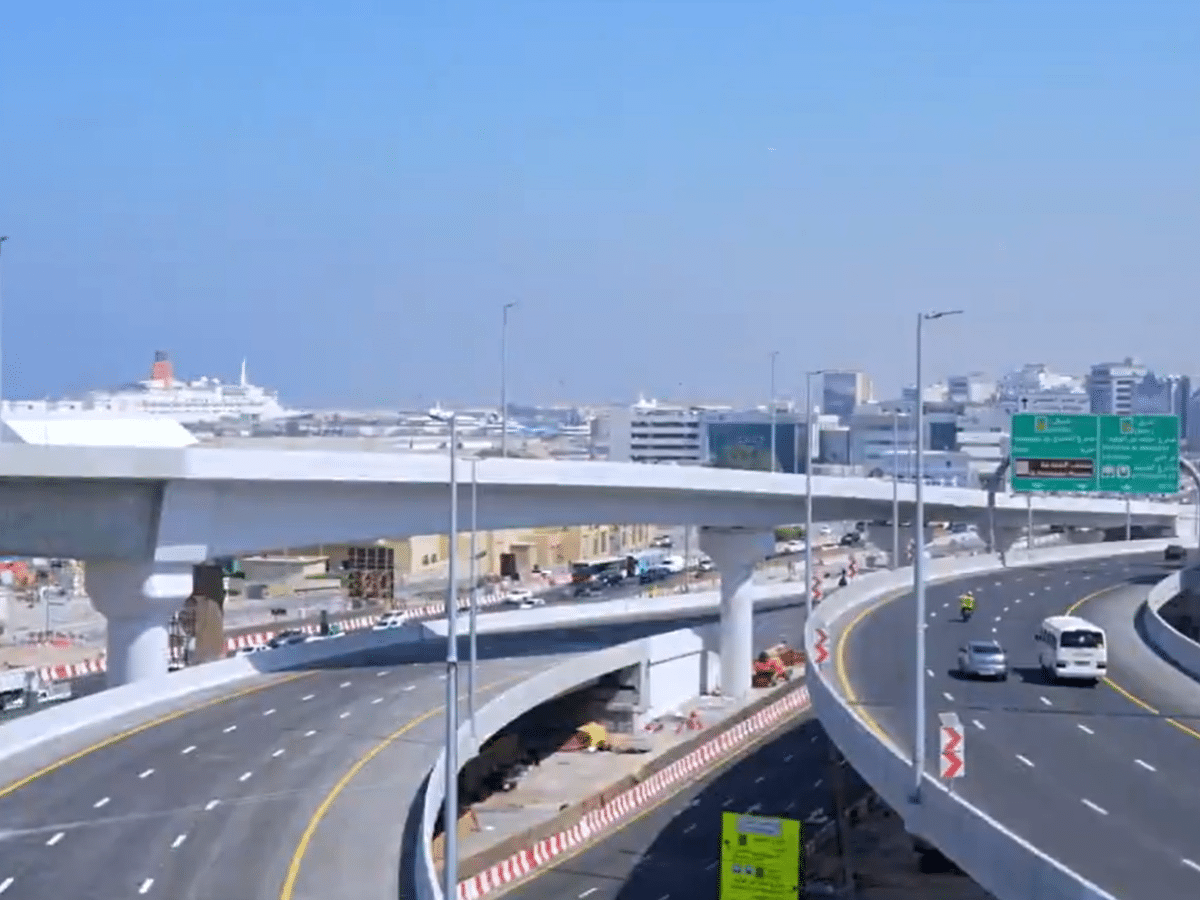In a significant development for Dubai’s transportation infrastructure, the Roads and Transport Authority (RTA) has announced the opening of a new bridge as part of the ongoing Al Shindagha Corridor redevelopment project. This strategic venture is designed to dramatically reduce travel time along one of the city’s central thoroughfares, with expectations of cutting commutes by an impressive 88 minutes. As the project now reaches a remarkable 90 percent completion, residents and visitors alike can anticipate a notable easing of travel times in the near future.
The newly inaugurated bridge is designed to facilitate smooth traffic flow from the Infinity Bridge, extending via Al Mina Street to the crucial intersection of Sheikh Rashid Street and Sheikh Khalifa bin Zayed Street. Spanning an impressive 1,210 meters, this three-lane structure is engineered to accommodate a traffic volume of up to 4,800 vehicles per hour, thereby significantly enhancing the capacity of one of Dubai’s busiest routes.
His Excellency Mattar Al Tayer, Director-General and Chairman of the Board of Executive Directors of the RTA, spoke to the substantial progress of the Al Shindagha Corridor redevelopment, noting that only two additional bridges remain to be constructed to complete the project. According to Al Tayer, “The RTA has completed 90 percent of the total works of phase five of the project, and will open the other two bridges in the second quarter of this year.” This ambitious development reflects the RTA’s commitment to improving connectivity within Dubai, a city known for its rapid urban growth and infrastructural advancements.
The overall Al Shindagha Corridor project stretches over 4.8 kilometers and is set to feature a total of five new bridges. In a strategic effort to enhance traffic flow and alleviate congestion, the two remaining bridges are critical components of the redevelopment initiative. The first of these upcoming structures will span 780 meters, consist of three lanes, and also handle up to 4,800 vehicles per hour. It will facilitate traffic moving from Infinity Bridge towards Al Wasl Street. On the other hand, the second bridge will measure 985 meters in length and comprise two lanes, with a capacity to accommodate 3,200 vehicles per hour. This structure will serve traffic from Jumeirah Street directed towards both Al Mina Street and Al Saqr Interchange.
In a recent development earlier in January, the RTA had already completed a different aspect of the project—the second bridge on Sheikh Rashid Road, which measures 605 meters and consists of two lanes designed to handle 3,200 cars per hour. This particular bridge, crucially positioned between Al Mina Street and Sheikh Khalifa bin Zayed Street, is aimed at alleviating daily traffic congestion while advancing the overall flow of vehicular movement in the area.
With these rapid advancements in infrastructure, Dubai continues to position itself as a leading global city characterized by innovation and efficiency. The Al Shindagha Corridor redevelopment is not merely a testament to the UAE’s infrastructural ambitions but also serves as a response to the needs of a rapidly growing population and the corresponding increase in vehicular traffic. Indeed, this redevelopment is expected to enhance the quality of life for residents by offering quicker routes across the city and reducing travel-related stress during peak hours.
As residents and visitors eagerly anticipate the full completion of the project, the RTA underlines its mission to ensure modernity, sustainability, and safety within Dubai’s transportation network. This ongoing initiative exemplifies the city’s proactive approach to dealing with the complexities of urban transit, embodying a vision for an interconnected future.
In summary, the Al Shindagha Corridor redevelopment stands not just as a construction project but as a crucial component in Dubai’s ongoing journey towards functional sophistication and urban resilience. As the emirate continues to attract visitors and expatriates drawn by its dynamic economy, such infrastructure improvements will remain central to the challenges and opportunities presented by urbanization.
Tags: #UAE #BusinessNews #EconomyNews

